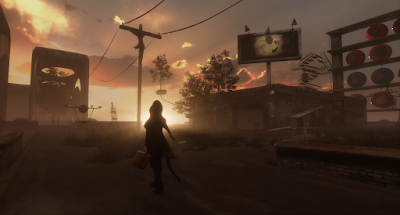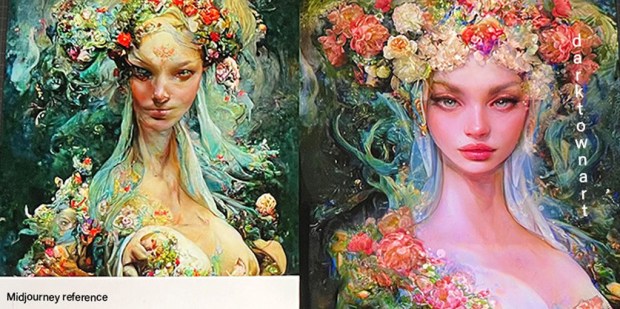#2 Glyph Graves's wind sculpture
I met Glyph Graves a few years ago now. If I remember correctly, we were both added to the NPIRL group at the same time, class of whenever, and we would both rush off to see the new art events listed for the members. Each time an event was listed there would be a variety of NPIRL members showing up, always changing, but one consistent thing was that Glyph and I would be there analyzing the build each time.
Glyphs wind sculpture is a build which is unique to the medium of second life. Below are selected comments taken from Glyph about this build. He expresses his intentions much better than I can. In the above machinima you can hear undulations of music as well as see creatures roaming the environment. The music and movement of the creatures are connected to the second life wind map. With each change in wind there is a change in the prim ballet.
"The best way to think of the installation and the way it is meant to be thought of is as one large kinetic sculpture whose elements interact with the digital fabric of SL.
It is meant to be viewed not only as a whole but over a period of time. Of course, the aesthetic of this sculpture like any other sculpture is an emergent property of the elements that make it up. In this instance it is helpful to understand what the individual elements that make up the piece are doing to create the whole sculpture.
Each element expresses the same thing but translated into different parts of our perceptual spectrum.
The position and movement of each element of the sculpture IS the shade of colour, it IS the note it produces. That is, they all are the same thing expressed in a different way that feeds back to reinforce the whole.
Just as the combination of the notes from all the elements produce an effect equivalent to a symphony that unfolds over time so do the colour and the movement. All three combine to produce the sculpture.
Finally, the project was aimed not only at extending our senses but also showcasing a small portion of the tools that SL offers us. The lovely thing about SL is that we do not have to adhere to forms constrained by the limitations of conventional media. We are freed to do more though there are other constraints such as prim numbers and server loads. I didn’t have to use the SL wind, I could just as easily have used a more conventional approach, different algorithms to do a similar thing but I find something quite beautiful in the way the wind has been implemented in SL and it deserves a showing.
You will see the windmap that maps the SL wind to colour.
You will hear the windflutes that map the wind vector to two sets of notes.
This installation takes the SL wind and maps it to movement, colour and a set of notes represented in the forms of creatures moving in the air.
Each individual creature in the main installation is independent producing its colour, movement and a note depending on its position, from the wind vector at that point. Pan around at the different coloured organisms and enjoy.
The x and y movement of the jellyfish/ windworms is a mapping from the SL wind vector.
The colours are the wind vector mapped to the Red Green Blue Vector, with strength as the blue component.
Sound
In the main installation the X component of the wind is mapped to the DreamPad notes (see acknowledgments) and the Y axis to the flute. Wind strength modulates the volume on both, and the tempo of the flute (rather perversely I made the tempo inversely proportional to the wind strength, ie stronger = slower).
The result is surprisingly pleasing.. there is some dissonance, but then I like that. Mostly it is melodic but of course the result depends on the strength and direction of the SL wind."
http://slurl.com/secondlife/Arachnod/200/77/2237


Comments
Thank you, Bryn